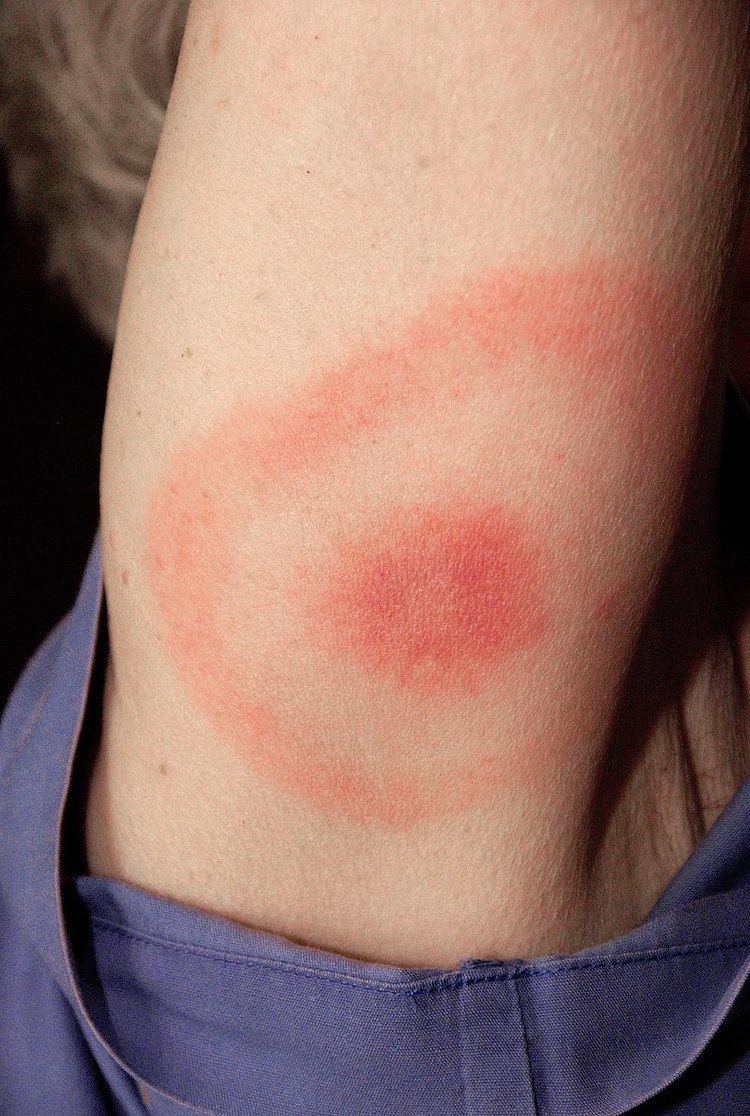ICD-9-CM 695 DiseasesDB 4466 | ICD-10 L51-L54 ICD-O l MeSH D004890 | |
 | ||
Erythema (from the Greek erythros, meaning red) is redness of the skin or mucous membranes, caused by hyperemia (increased blood flow) in superficial capillaries. It occurs with any skin injury, infection, or inflammation. Examples of erythema not associated with pathology include nervous blushes.
Contents
Causes
It can be caused by infection, massage, electrical treatment, acne medication, allergies, exercise, solar radiation (sunburn), cutaneous radiation syndrome, mercury toxicity, blister agents, niacin administration, or waxing and tweezing of the hairs—any of which can cause the capillaries to dilate, resulting in redness. Erythema is a common side effect of radiotherapy treatment due to patient exposure to ionizing radiation.
Diagnosis
Erythema disappears on finger pressure (blanching), while purpura or bleeding in the skin and pigmentation do not. There is no temperature elevation, unless it is associated with the dilation of arteries in the deeper layer of the skin.
